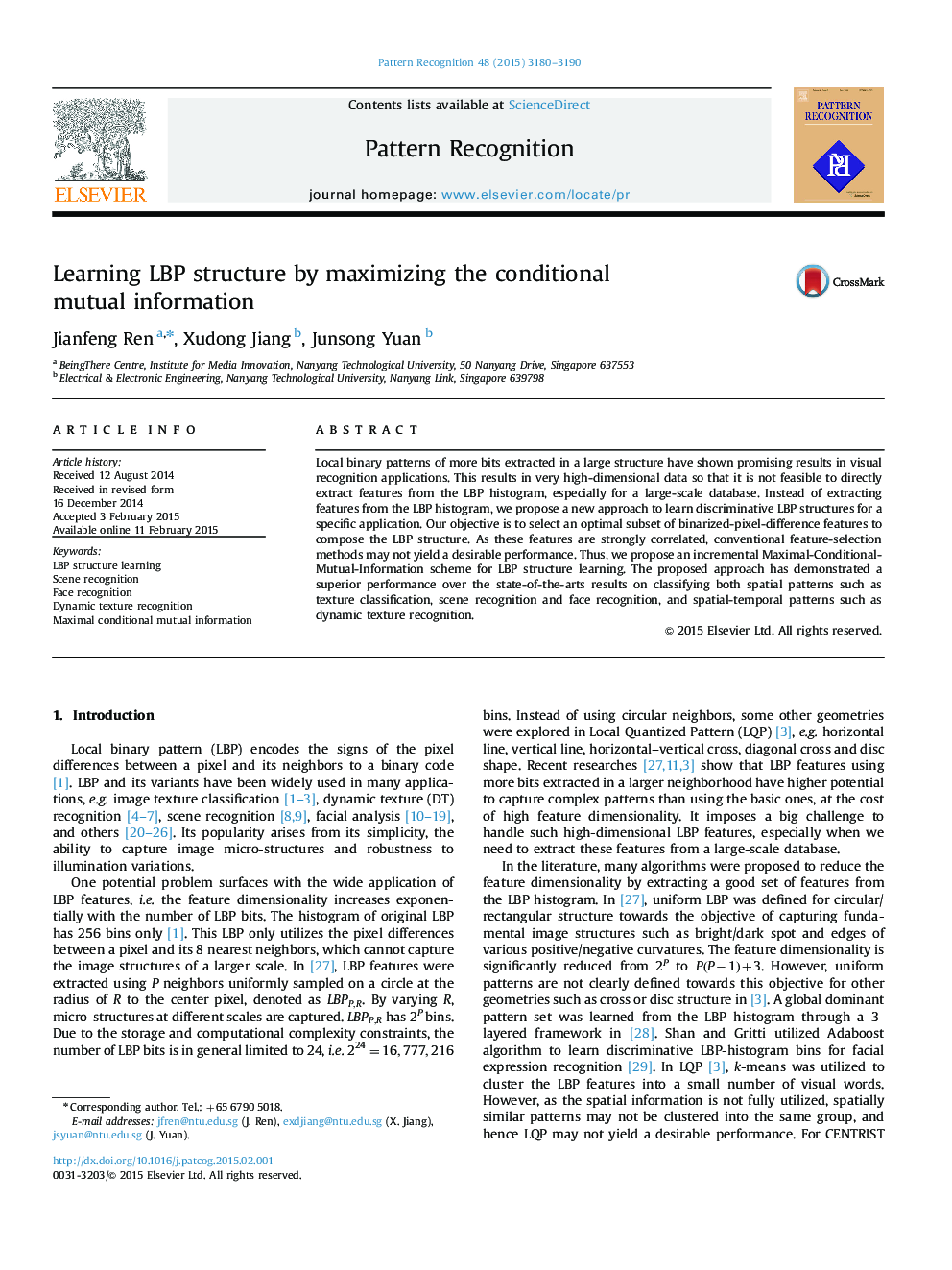| Article ID | Journal | Published Year | Pages | File Type |
|---|---|---|---|---|
| 533252 | Pattern Recognition | 2015 | 11 Pages |
•We propose a new approach to tackle high-dimensional LBP features.•It discovers optimal LBP structure to generate discriminative features.•We propose a MCMI scheme for LBP structure learning to handle pixel correlation.•It demonstrates a superior performance to SOTA on various visual applications.
Local binary patterns of more bits extracted in a large structure have shown promising results in visual recognition applications. This results in very high-dimensional data so that it is not feasible to directly extract features from the LBP histogram, especially for a large-scale database. Instead of extracting features from the LBP histogram, we propose a new approach to learn discriminative LBP structures for a specific application. Our objective is to select an optimal subset of binarized-pixel-difference features to compose the LBP structure. As these features are strongly correlated, conventional feature-selection methods may not yield a desirable performance. Thus, we propose an incremental Maximal-Conditional-Mutual-Information scheme for LBP structure learning. The proposed approach has demonstrated a superior performance over the state-of-the-arts results on classifying both spatial patterns such as texture classification, scene recognition and face recognition, and spatial-temporal patterns such as dynamic texture recognition.
